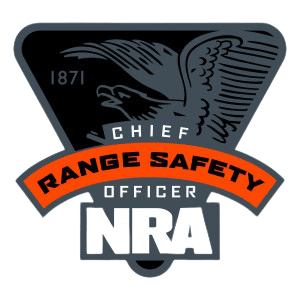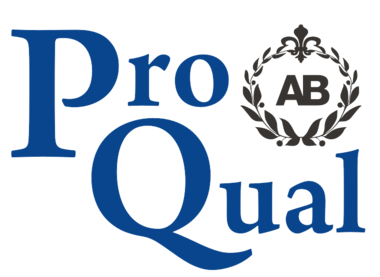ProQaul Level 3 Diploma in Intelligence Analysis

Introduction
The Level 3 Diploma in Intelligence Analysis is aimed at candidates working in an intelligence analysis role, and provides them with a nationally recognised qualification to demonstrate competence.
The awarding organisation for this qualification is ProQual Awarding Body and the regulatory body is the Office of Qualifications and Examinations Regulation (Ofqual). The specification for these qualifications has been approved by the Welsh Government for use by centres in Wales and by the Council for the Curriculum Examinations and Assessment (CCEA) for use by centres in Northern Ireland.
This qualification has been accredited onto the Regulated Qualifications Framework (RQF).
Entry Requirements
Qualification Structure

Assessment
Each candidate is required to produce evidence which demonstrates their achievement of all of the learning outcomes and assessment criteria for each unit.
Learning outcomes set out what a candidate is expected to know, understand or be able to do.
Assessment criteria specify the standard a candidate must meet to show the learning outcome has been achieved.
Evidence can include:
• assignments/projects/reports
• worksheets
• portfolio of evidence
• record of oral and/or written questioning
• candidate test papers
Learning Outcomes and Assessment Criteria
1 Understand the factors contributing to
the development of terms of reference
for an intelligence analysis product
1.1 Explain the nature of intelligence task requests
1.2 Assess methodologies for responding to
intelligence requests
1.3 Explain the reporting procedures
• internal
• customer
1.4 Summarise the types of problem that can occur in
terms of
• timescale
• type of product
• intelligence resource
1.5 Specify actions to mitigate problems that can occur
in terms of
• timescale
• type of product
• intelligence resource
1.6 Explain the importance of complying with national
and organisational requirements relating to
information handling and analysis
2 Be able to develop terms of reference for
an intelligence analysis product
2.1 Obtain suitable information from the customer on
the requirements for the intelligence analysis
product
2.2 Provide the customer with clear information on
the intelligence analysis products and techniques
that are suitable and achievable
2.3 Establish the objectives of the intelligence analysis
product through negotiation and agreement with
the customer
2.4 Identify the parameters of the intelligence analysis
product
2.5 Agree with the customer how the progress of the
intelligence analysis will be reported to them and
others
2.6 Identify any problems or limitations with the
requirements and take the appropriate action
2.7 Evaluate intelligence analysis product against given
criteria
2.8 Comply with national, and organisational
requirements relating to information handling and
its analysis
1 Understand the processes involved in the
evaluation of information for intelligence
analysis
1.1 Explain the stages within the intelligence cycle
1.2 Explain the information required for an
intelligence analysis product
1.3 Describe how to establish an intelligence
collection plan
1.4 Explain the potential sources of information for
intelligence analysis
1.5 Explain how to evaluate information for its
reliability, validity and contribution to the
analysis
1.6 Explain the reasons why it is important to obtain
agreement to use information
1.7 Explain how to protect information sources
1.8 Summarise options for remedial actions to be
taken to resolve resource problems in
intelligence analysis
1.9 Summarise the reasons why it is important to
apply the collection methods effectively
1.10 Explain the use and limitation of systems for
collating information
1.11 Explain the reasons why it is important to be able
to provide an audit trail
2 Be able to evaluate information for
intelligence analysis
2.1 Identify the type and range of information
required
2.2 Contribute to the development of an agreed
intelligence collection plan
2.3 Evaluate the sources of information for their
contribution to the intelligence analysis
2.4 Obtain any necessary agreement from all
relevant people to use the source of information
2.5 Collate the information in line with the
requirements of the analysis
2.6 Take appropriate action to resolve identified
problems with the collation of information
2.7 Evaluate the information for its reliability,
validity and contribution to the analysis
2.8 Comply with organisational requirements
relating to information handling and analysis
1 Understand the application of analytical
techniques to interpret information for
intelligence analysis
1.1 Explain how to confirm that the information being
analysed is relevant
1.2 Explain analysis techniques in order to select the
most appropriate to the task
1.3 Explain the use of specific techniques used
together or separately
1.4 Describe the systems and processes for recording
the analysis materials
1.5 Explain the interpretation of information being
analysed
1.6 Explain the requirements for the presentation of
analysis materials
2 Be able to apply analytical techniques to
interpret information for intelligence
analysis
2.1 Collate information relevant to the analysis
2.2 Analyse the information effectively according to
the appropriate techniques
2.3 Identify aspects of the analysis process that affect
the credibility and validity of the end product
2.4 Present the analytical product in a manner that
highlights relevant patterns, trends and activities
2.5 Present the analytical product in a manner that
highlights known risks in credibility and validity
2.6 Present the analytical product in accordance with
the terms of reference agreed with the client
1 Understand the requirements for making
judgements based on assessments made
through intelligence analysis
1.1 Explain the process of making assessments
from intelligence gathered
1.2 Explain how to test assessments
1.3 Explain how to identify relationships,
anomalies and patterns that could affect an
assessment
1.4 Explain how to interpret the need for
further information or analysis
1.5 Explain the application of confidence levels
regarding assessments
1.6 Explain how to present assessments,
including those that indicate the need for
urgent action
1.7 Explain how assessments contribute to the
development of judgements
2 Be able to develop assessments from
intelligence analysis
2.1 Apply appropriate methods to identify key
findings from the information
2.2 Identify significant relationships, gaps,
anomalies and patterns that occur within
the information
2.3 Identify the need for further information or
analysis
2.4 Explain key findings clearly and accurately
to others
2.5 Develop and test assessments
2.6 Provide audit trail for the structure and
logic of assessments
3 Be able to make judgments based on
assessments developed from intelligence
analysis
3.1 Provide clear forecasts of developments
and likely consequences
3.2 Make judgments that are supported by the
results of the analysis
3.3 Differentiate clearly between fact and
opinion when presenting judgments
1 Understand the processes in creating
an intelligence analysis product
1.1 Explain the relevant terms of reference
1.2 Explain the purpose of the intelligence analysis product
and how to produce it
1.3 Explain the importance of the accuracy, currency,
relevance, timeliness and coverage of the intelligence
analysis product
1.4 Explain how to use reasoned argument to support
decision making based on intelligence analysis
1.5 Explain the audit trail process
2 Be able to create an intelligence
analysis product to support decision
making
2.1 Produce a product that meets the requirements of the
terms of reference
2.2 Confirm that the intelligence analysis product is
accurate, current, relevant, timely and sufficient
2.3 Produce and appropriate audit trail that supports the
intelligence analysis product
2.4 Maintain appropriate records of the intelligence
analysis product
1 Understand the process for
disseminating intelligence analysis
product
1.1 Describe the characteristics of different types of
audience for intelligence analysis products
1.2 Summarise the presentation methods that could be used
for different types of audience
1.3 Explain how to select the most effective presentation
methods for the intelligence analysis product
1.4 Summarise the type of queries and issues that might be
raised about the intelligence analysis product
1.5 Explain the appropriate methods involved in
disseminating information
2 Be able to disseminate the
intelligence analysis product
2.1 Ensure the intelligence analysis product is disseminated
in accordance with terms of reference
2.2 Select the most effective media and content of the
intelligence analysis product to suit the needs of the
intended audiences
2.3 Take appropriate action to deal with problems with the
dissemination of the intelligence analysis product
2.4 Use the selected presentation methods to disseminate
the intelligence analysis product
2.5 Provide customers with the opportunity to check their
understanding of the intelligence analysis product
2.6 Respond effectively to queries and issues raised
2.7 Use feedback to improve the content and dissemination
of the intelligence analysis product
1 Understand the process involved in evaluating
the effectiveness of an intelligence analysis
product
1.1 Explain how to use feedback on an
intelligence analysis product
1.2 Explain the aspects of the intelligence analysis
product that have the potential to be
improved
1.3 Explain why it is important to be able to
justify changes to an intelligence analysis
product
2 Evaluate the effectiveness of the intelligence
analysis product
2.1 Compare the intelligence analysis product
against the objectives in the terms of
reference
2.2 Evaluate customer feedback from the
intelligence analysis product
2.3 Evaluate potential improvements that may be
achieved by using a different methodology
2.4 Suggest potential changes to an intelligence
analysis product supported by a clear
rationale
1 Understand the purpose of
information used in intelligence
analysis
1.1 Summarise the intelligence analysis processes used by
the organisation
1.2 Evaluate sources of information used in intelligence
analysis
1.3 Summarise the criteria for selecting an intelligence
analysis process
1.4 Explain the information management systems used in the
intelligence analysis process
1.5 Explain the process for reviewing information used in
intelligence analysis
2 Be able to review the type of
information used in intelligence
analysis
2.1 Identify the type and amount of information available in
the organisation for use in intelligence analysis
2.2 Identify the different sources of information used for
intelligence analysis
2.3 Assess the reliability and validity of the information used
for intelligence analysis
2.4 Identify any features of the information that have a
significant impact on the effectiveness of intelligence
analysis
2.5 Justify any potential changes in intelligence analysis
2.6 Contribute to recommendations on potential changes in
the intelligence analysis process
Level
3












